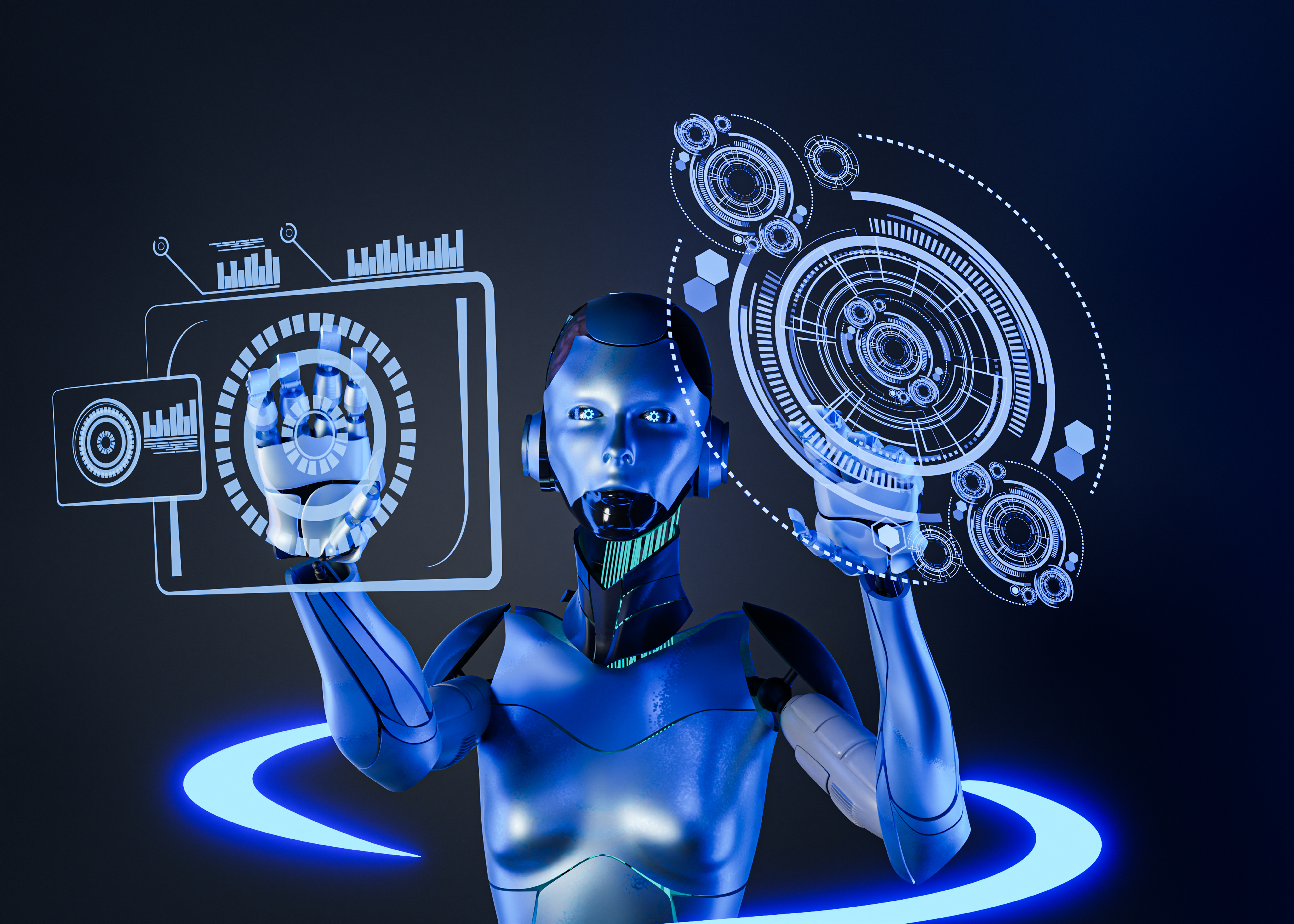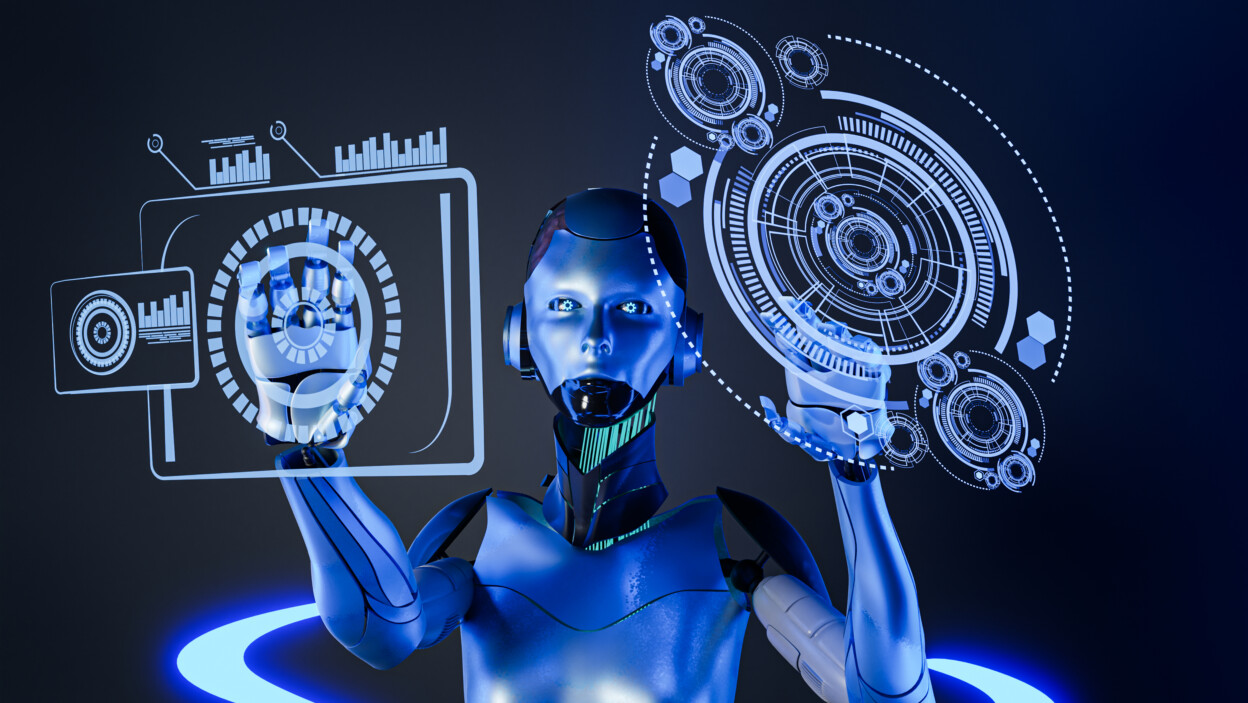The world of artificial intelligence is evolving at an unprecedented pace, with generative AI models leading the charge in unlocking new possibilities across various industries. From creating compelling text to generating stunning visuals and composing melodies, generative AI is transforming the way we approach creativity and problem-solving. In this blog post, we’ll dive into the realm of generative AI development services, exploring their potential applications and benefits for businesses and individuals alike.
As AI technologies persistently advance and mature, businesses require expert guidance and support in implementing, optimizing, and maintaining generative AI solutions. Launching a generative AI service or incorporating generative AI capabilities into your existing suite of services presents an outstanding opportunity to position yourself as a pioneer in this burgeoning field while assisting organizations in navigating the intricacies of AI-driven transformation. In this guide, we will take you through the essential steps to establish a thriving generative AI service. In this article, we’ll cover the following topics:
- What is a generative AI Application?
- Characteristics of Generative AI Applications?
- Generative AI Business Models
- Scoping Generative AI Applications
- Building Generative AI service delivery team
- Pricing Generative AI Service
- Launching your generative AI Service
What is a generative AI Application?
A generative AI application is a software program or service that uses generative artificial intelligence models to create or generate new content, data, or solutions based on the input it receives. These applications harness the power of AI models, such as deep learning neural networks, to produce outputs that mimic human-like creativity, problem-solving abilities, and language understanding.
Generative AI applications can be used in a wide range of domains, including but not limited to:
- Text generation – Applications that can generate human-like text, such as chatbots, content generators, and virtual assistants, etc.
- Image generation – Applications that can create new images or modify existing ones, often used for generating artwork, design elements, or even deep fake content.
- Audio generation – Applications that can convert text to speech, generate original music compositions, styles, or remix existing tracks.
- Video generation – Applications that can create new video content, such as animations, simulations, or video synthesis based on input parameters.
Characteristics of Generative AI applications
Generative AI applications have several characteristics that set them apart from other applications, or even from other types of AI applications. These characteristics stem from the use of generative models and their ability to create new content or data based on input. Here are some common characteristics of Generative AI applications:
- Creativity – Generative AI applications excel at producing novel outputs, such as text, images, or music, by generating new content that mimics human-like creativity and understanding.
- Adaptability – These applications can be fine-tuned or trained on a wide range of domains and datasets, allowing them to adapt to different use cases, industries, and challenges.
- Context-awareness – Generative AI models, particularly those based on transformers like GPT, have a strong ability to understand context and generate relevant outputs based on the given input or prompt.
- Variability – Generative AI applications can produce diverse outputs, even when given the same input, by incorporating randomness or sampling during the generation process, leading to a wide range of creative possibilities.
- Data efficiency – Many generative AI models can be fine-tuned on relatively smaller datasets while leveraging the knowledge they have acquired during pre-training on massive datasets, making them effective in situations where data might be scarce or expensive to acquire.
Generative AI business models
The rapid growth of Generative AI applications is revolutionizing industries across the board, driven by advances in foundation models. This surge in adoption is giving rise to new and innovative business models that capitalize on the transformative potential of generative AI.
Generative AI applications are now being used to create high-quality content, automate customer support, develop personalized experiences, extract insights from unstructured data, and much more. As a result, businesses can streamline their operations, reduce costs, and enhance customer engagement. Some of the emerging business models in the generative AI space includes:
Software as a Service (SaaS)
The Generative AI application Software as a Service (SaaS) business model involves providing cloud-based AI applications to customers on a subscription basis. Customers can access the application through a web interface, without the need for installing software or maintaining hardware infrastructure.
One example is an AI-driven customer support platform that leverages generative AI for creating chatbots or virtual assistants. These platforms allow businesses to automate customer interactions, providing quick and accurate responses to common inquiries. Companies subscribe to the platform to access and customize the AI-powered chatbot or virtual assistant, integrating it into their existing customer support channels. The platform provider handles the maintenance and updates of the AI models, ensuring that the chatbot remains effective and up-to-date with industry standards and trends.
Launching a Generative AI service leveraging existing foundation models like GPT-3, DALLE is a faster and easier way to jump start the business. The SaaS business model simplifies the process of adopting generative AI solutions for customers, allowing them to focus on their core business while benefiting from the advanced capabilities of AI-driven applications.
Custom Development and Consulting Service
The custom development and consulting business model focuses on creating tailored AI solutions and providing expert guidance to clients with unique requirements. This model enables businesses to leverage generative AI technologies to address their specific needs and challenges while receiving professional assistance throughout the implementation and management process.
One example of custom development in the Generative AI space is the creation of bespoke AI models for a particular industry or use case. A company might require a generative AI model that is fine-tuned to generate specialized content, such as legal documents or technical reports. In this case, a custom development team would work closely with the client to gather requirements, develop a tailored AI model, and integrate it into the client’s existing systems or applications.
Alternatively, you can build partnerships with already established service providers and offer white-labeled solutions with complementary expertise and shared target markets. This collaborative approach would help you expand your market presence, leverage partner expertise, and create new revenue streams by offering tailored solutions.
Training and Workshops
The rapidly evolving landscape of Generative AI makes training and workshop programs an essential component for businesses seeking to harness the power of this technology. As generative AI applications increasingly impact various industries, it is crucial for organizations to equip their workforce with the necessary knowledge and skills to stay competitive. Training and workshop programs address this need by fostering a deeper understanding of generative AI concepts, use cases, and best practices, enabling businesses to accelerate innovation, improve efficiency, and make informed decisions in a dynamically changing AI-driven environment.
Tip: A faster and easier way to start with Generative AI applications is to leverage pre-trained AI models, and build upon existing APIs or frameworks. By utilizing these resources, you can significantly reduce the time and effort required for model training and fine-tuning. Additionally, focus on identifying a specific use case or problem within your industry or organization that can benefit from generative AI, and start by addressing that need. This targeted approach enables you to gain valuable experience and demonstrate the potential benefits of generative AI without getting overwhelmed by the complexity and breadth of its possible applications.
Scoping Generative AI applications
Generative AI applications comprise several essential components to create novel outputs and innovative solutions. Generative AI application development involves selecting or designing an appropriate generative AI model; training and fine-tuning the model using computational resources and optimization techniques; and application development and deployment, where the trained model is incorporated into an intuitive interface and hosted on a scalable infrastructure.
Developing a generative AI application comes with its fair share of challenges and complexities. These may include ensuring data privacy and security, addressing potential ethical concerns, handling computational resource requirements, and providing continuous maintenance and updates to keep the model relevant. By considering each aspect of the development process, businesses and individuals can successfully harness the power of generative AI for creative problem-solving and innovation across a wide range of industries.
When planning to launch a Generative AI application , it’s important to understand its different components, which can be grouped into the following categories:
AI Model
The initial stage in developing generative AI application involves determining the AI model to employ. Will your application leverage an existing AI model like OpenAI’s GPT, or are you building a bespoke model from scratch?
Next, consider the training and fine-tuning of the model. Will your model be trained on a dataset composed of internal data, or will you utilize a pre-trained model and fine-tune it for your specific use case?
The scoping, planning, pricing, and execution of your generative AI application will vary significantly depending on the chosen AI model and approach to training and fine-tuning.
Data Management
The second important step that widely impacts the scope of service is determining the data sources. Will your application rely on proprietary data collected internally, or will it utilize publicly available datasets (blogs, websites, etc.) or data acquired from third-party providers?
Next, consider the data preprocessing and cleaning processes. This involves dealing with missing, inconsistent, or duplicate data, as well as transforming the data into a suitable format for the AI model.
Data storage and management are also crucial aspects to address. This encompasses selecting the appropriate storage infrastructure, such as on-premises solutions or cloud-based services, and ensuring data privacy, security, and compliance with relevant regulations.
The efficiency, effectiveness, and reliability of your generative AI application will be significantly influenced by your approach to data management, making it a critical component of the development process. Hence, it is important to define the scope of your service clearly with well-defined acceptance criteria.
Technical Stack
The technical stack for a generative AI application comprises various tools, frameworks, and technologies essential for the development, training, and deployment of the AI model. Selecting the right components for your stack is crucial in ensuring the efficiency, scalability, and maintainability of your application
Primary components of the technical stack include programming languages, with Python being the most popular choice due to its extensive ecosystem of libraries and frameworks. AI frameworks and libraries like TensorFlow, PyTorch, and Hugging Face Transformers are vital for developing and training generative AI models, such as GANs, VAEs, or autoregressive models like GPT-3. GPU acceleration and parallel computing technologies, such as CUDA and cuDNN, enable faster training and processing, while data management and preprocessing tools like NumPy, pandas, and Dask facilitate efficient handling of the input data.
Additionally, the technical stack should consider visualization and monitoring tools, like TensorBoard or MLflow, that are important for tracking model performance and experimentation. Finally, version control and collaboration tools, such as Git and Jupyter Notebooks, ensure reproducibility and seamless teamwork throughout the development process. A well-designed technical stack is essential for the successful implementation and operation of a generative AI application.
Application development
Application development for a generative AI application involves integrating the trained AI model into a user-friendly interface, ensuring seamless interaction between the end-users and the AI-generated outputs. This process entails designing an intuitive user experience (UX), developing a robust front-end and back-end system, and selecting the appropriate hosting infrastructure for scalability and performance.
Building generative AI service delivery team
Developing and managing a Generative AI application involves various roles and responsibilities. These roles typically cover different aspects of the application lifecycle, from conception to deployment and ongoing maintenance. Here are some key roles and their responsibilities:
Project Manager
- Coordinate and manage the project timeline and resources
- Ensure effective communication among team members
- Monitor project progress and make necessary adjustments
AI Researcher / Data Scientist
- Research and select appropriate AI models and techniques
- Develop or fine-tune the AI model based on the application’s requirements
- Evaluate the AI model’s performance and make improvements as needed
Data Engineer
- Acquire, preprocess, and manage data for training and validation
- Develop data pipelines for data ingestion, processing, and storage
- Ensure data quality, security, and compliance with relevant regulations
Software Engineer / Backend Developer
- Design and implement the application’s backend architecture and APIs
- Integrate the AI model with the application
- Ensure code quality, performance, and scalability
Frontend Developer
- Design and develop the user interface (UI) and user experience (UX)
- Implement responsive designs and ensure compatibility across platforms and devices
- Optimize application performance and user interactions
DevOps / Infrastructure Engineer
- Set up and manage the deployment infrastructure, such as cloud services and servers
- Implement continuous integration and continuous deployment (CI/CD) pipelines
- Monitor and maintain application performance, security, and availability
Quality Assurance (QA) Engineer
- Develop and execute test plans and test cases for the application
- Identify and report bugs, performance issues, and usability problems
- Collaborate with the development team to resolve issues and improve application quality
These roles and responsibilities may vary depending on the size and scope of your service. In smaller teams, some roles can be combined or shared among team members. The key is to ensure that all aspects of the application lifecycle are covered with the appropriate expertise and skills.
Pricing Generative AI Service
When pricing a Generative AI application, it is important to consider various costs associated with development, operational, testing, training, and maintenance and support aspects. These elements play a significant role in determining a pricing strategy that covers expenses while providing value to customers and remaining competitive in the market. Here are some key costs to consider:
Development costs
- Model development – Account for expenses related to designing, training, and fine-tuning the AI model, including data acquisition, preprocessing, and computational resources.
- Application development – Factor in the costs associated with creating the user interface, front-end and back-end systems, as well as integrating the AI model into the application.
- Testing – Include the costs of thorough testing and quality assurance for both the AI model and the application, ensuring optimal performance and reliability.
Training costs
- Data preparation – Consider the time and resources required to gather, clean, preprocess, and label the data used for training the AI model.
- Model training – Factor in the expenses related to computational resources, such as GPUs and TPUs, used during the model training process.
- Fine-tuning – Account for the costs involved in fine-tuning the model, including optimization and transfer learning.
Operational costs
- Infrastructure – Evaluate the costs of hosting the application on cloud-based platforms, on-premises servers, or hybrid solutions, along with expenses related to storage, backup, and security.
- API usage – If your application depends on external APIs, such as OpenAI’s GPT-3, include the costs associated with accessing and using these APIs in your pricing.
Maintenance and support costs
- Ongoing maintenance – Consider ongoing costs required to maintain, update, and improve the application, such as bug fixes, performance optimization, and incorporating new features.
- Support and customer service – Calculate the expenses involved in providing customer support, including personnel, training, and communication tools.
By carefully accounting for each of these costs and understanding their impact on the overall pricing strategy, you can ensure the long-term sustainability and profitability of your Generative AI application service while delivering value to your customers.
Launching your service
Launching a Generative AI service business comes with its unique set of challenges, such as scoping and planning, cataloging services, building your team, order processing, and marketing your offerings effectively.
The Minutly service delivery platform helps you streamline the entire process by providing tools and resources for efficient scope your service, planning, cataloging, and order processing. Additionally, the platform offers an accessible marketplace for showcasing and marketing your services, allowing you to focus on delivering service and jump start your business. Sign up on Minutly now and discover a world of possibilities at your fingertips.









50+ Website features that makes running a business easier
Top 10: Creative Consulting Service Ideas for Project Managers
Fractional CXOs : Complete Guide – How to start, scale, and grow your fractional business
Create a Service
What is a Service Catalog?
Top 10 Essential Sales Service Requests Every Business Should Offer
Sharing your Minutly Catalog
Setting up your catalog